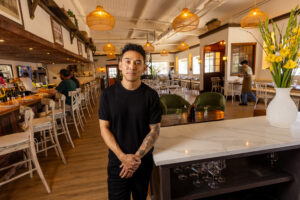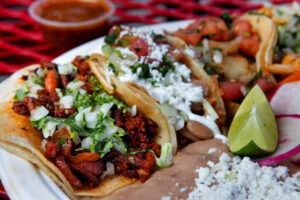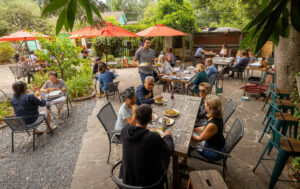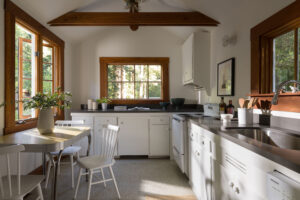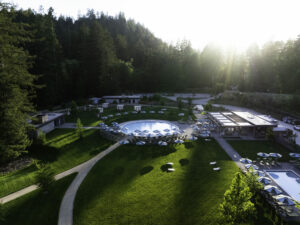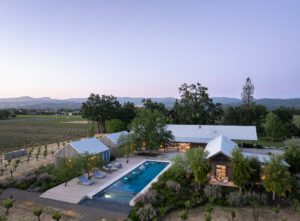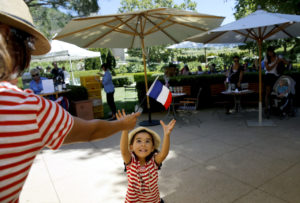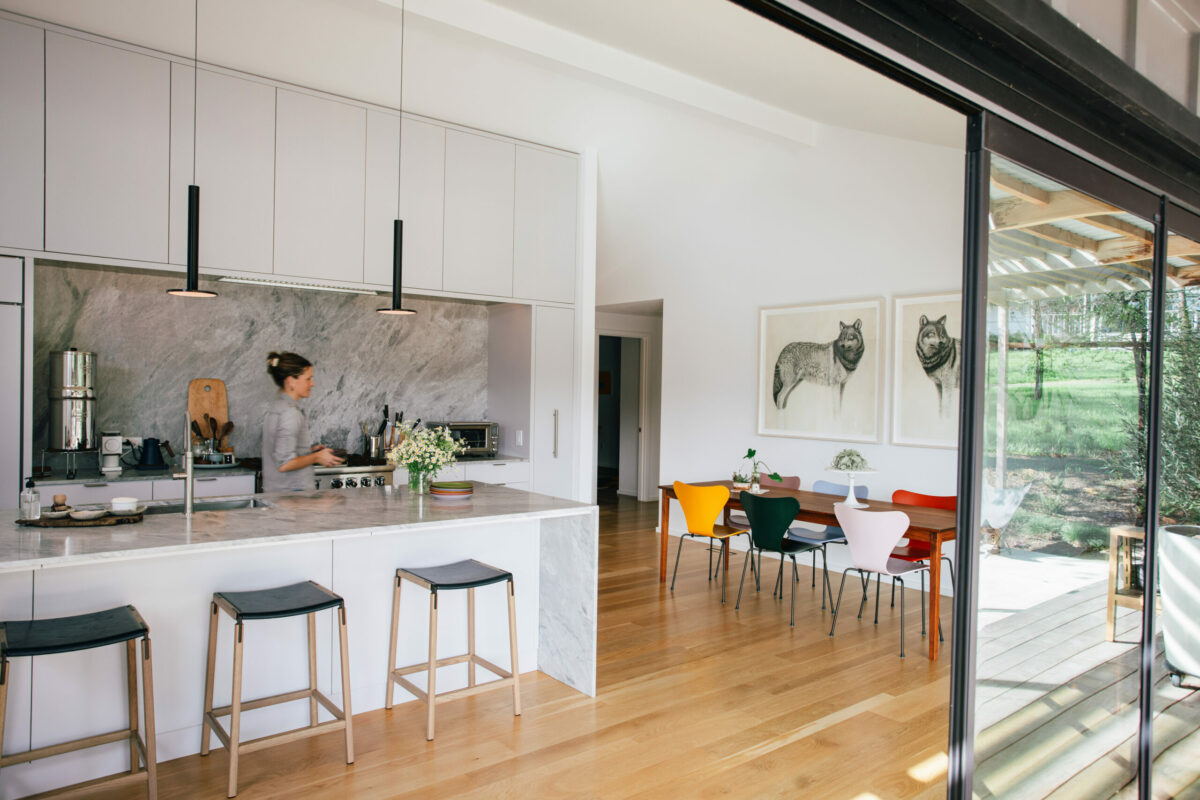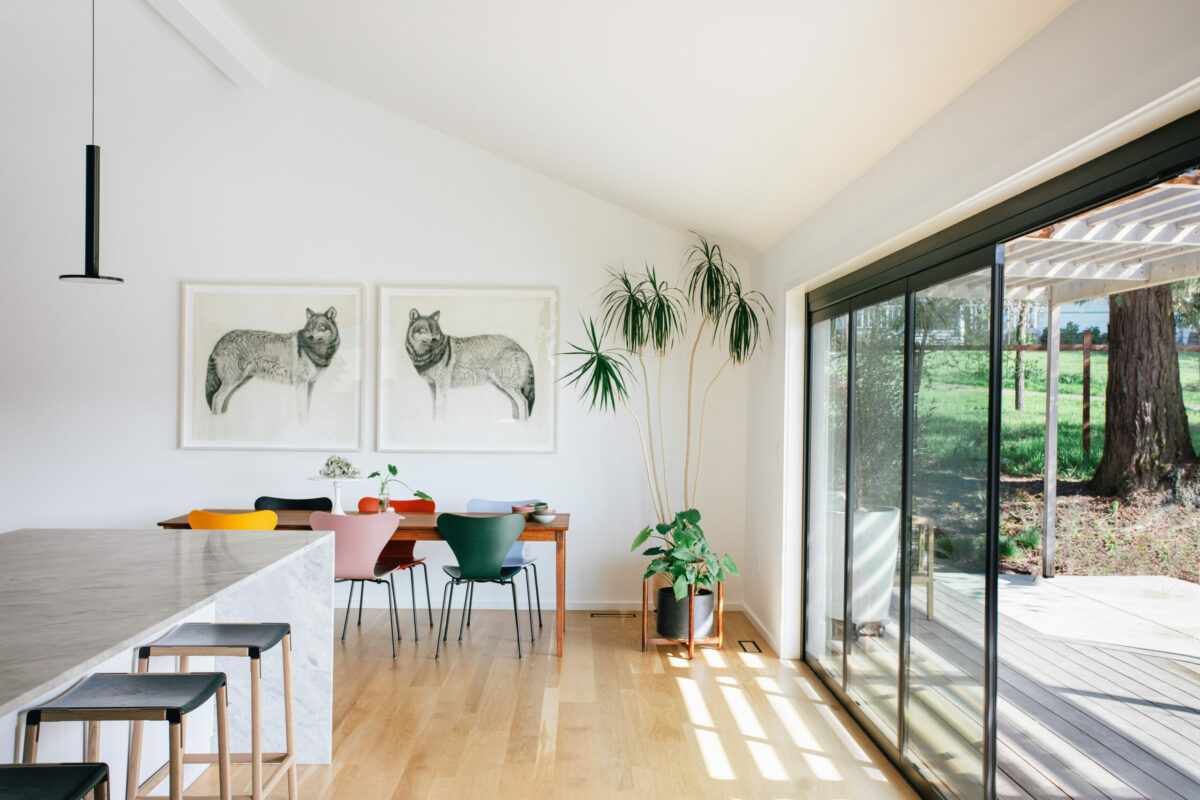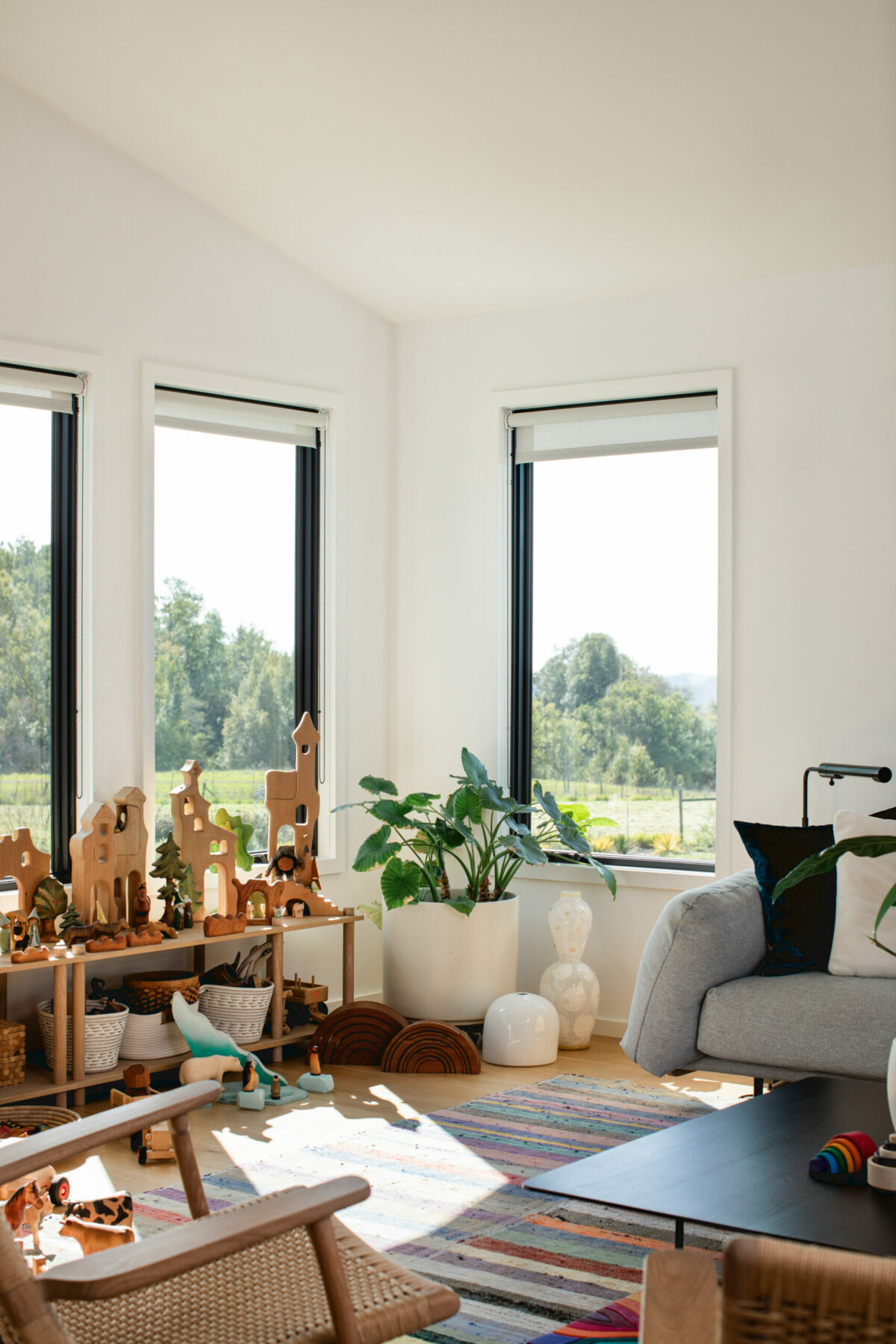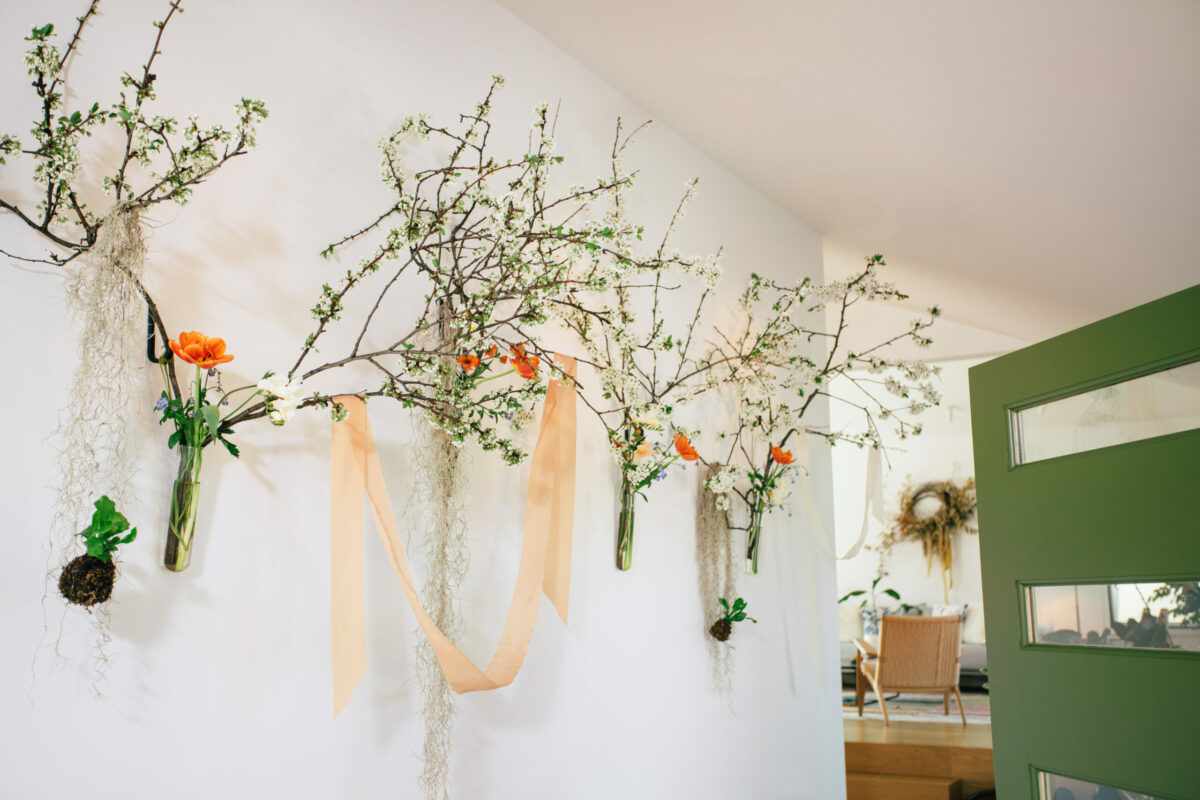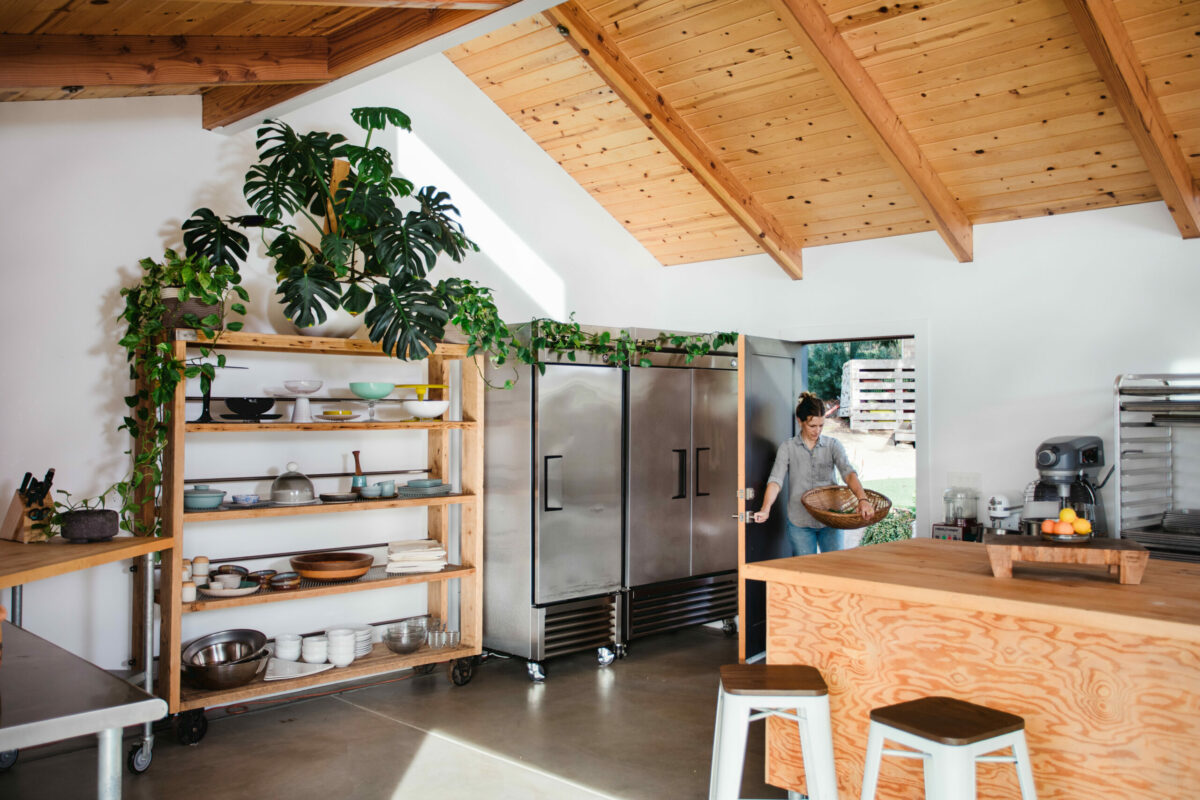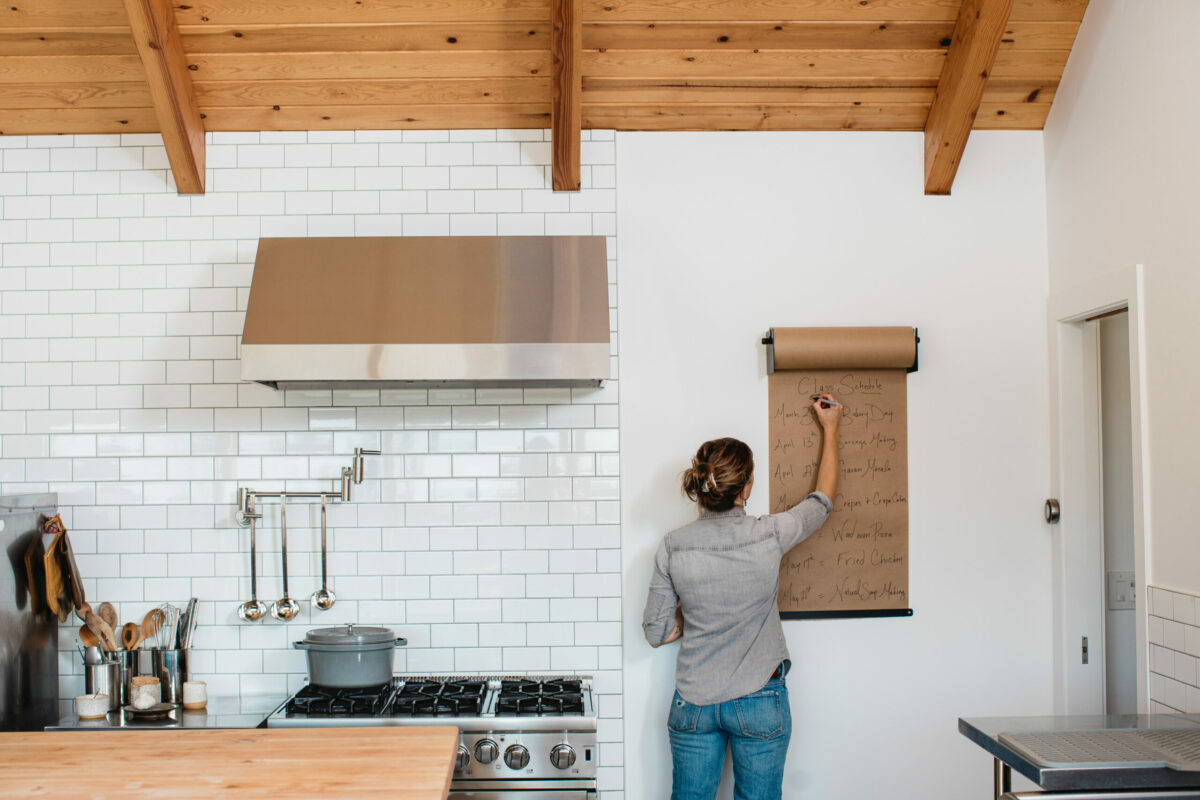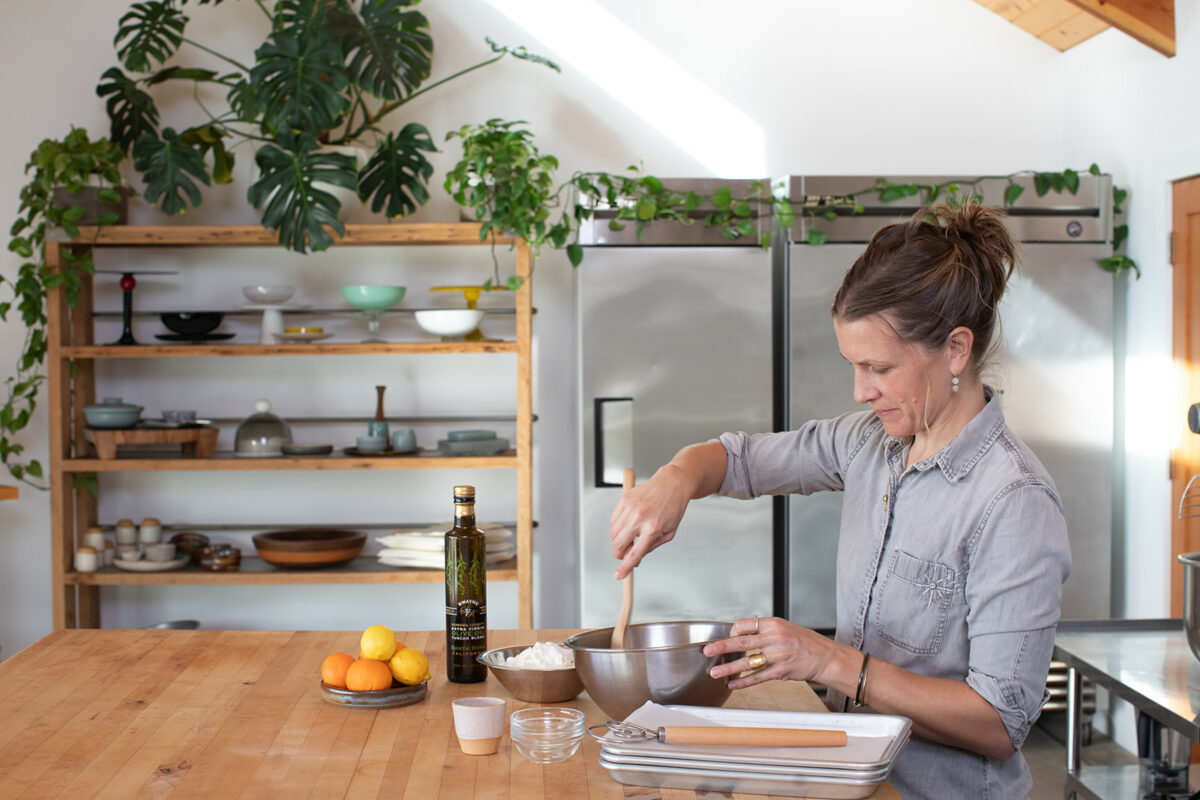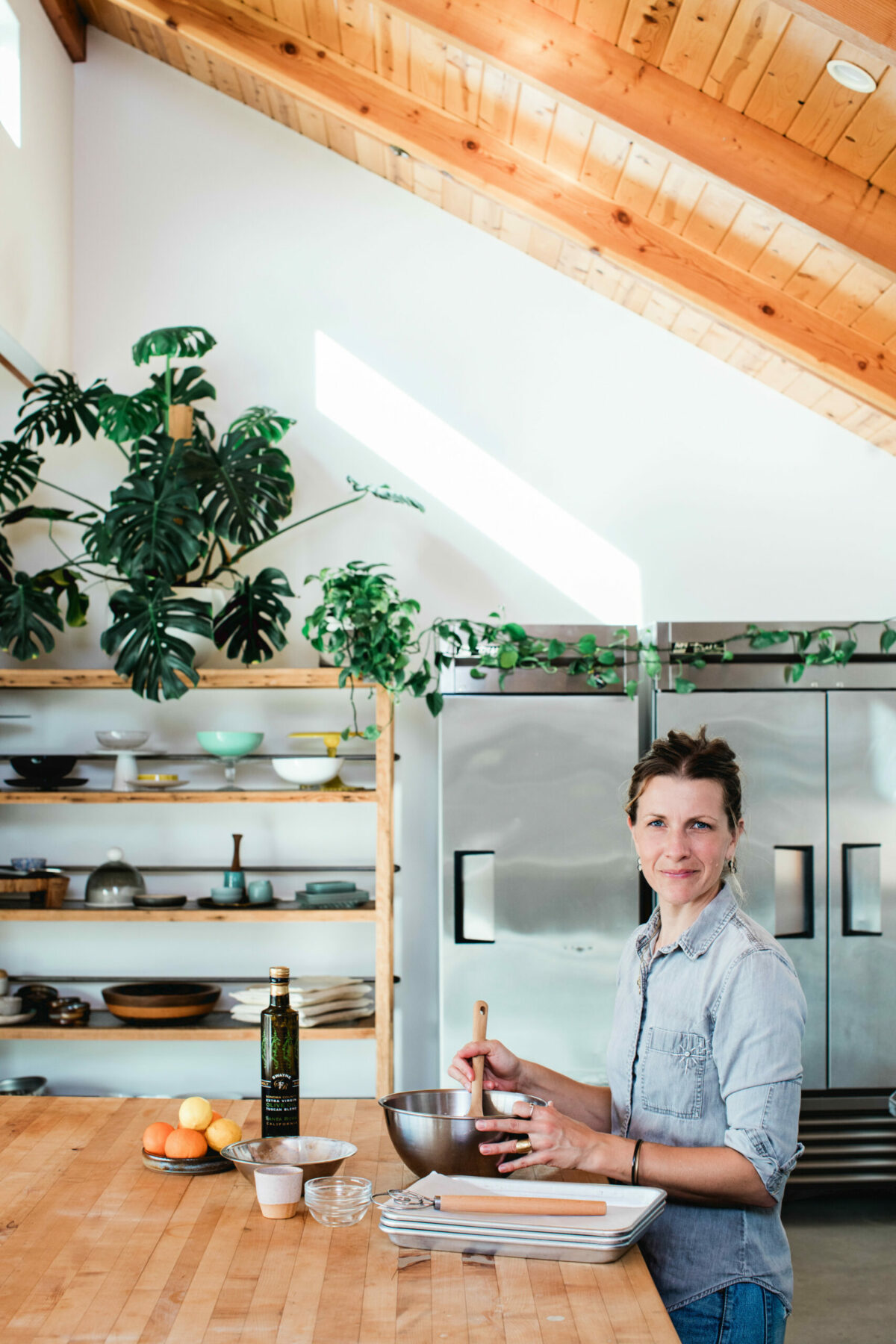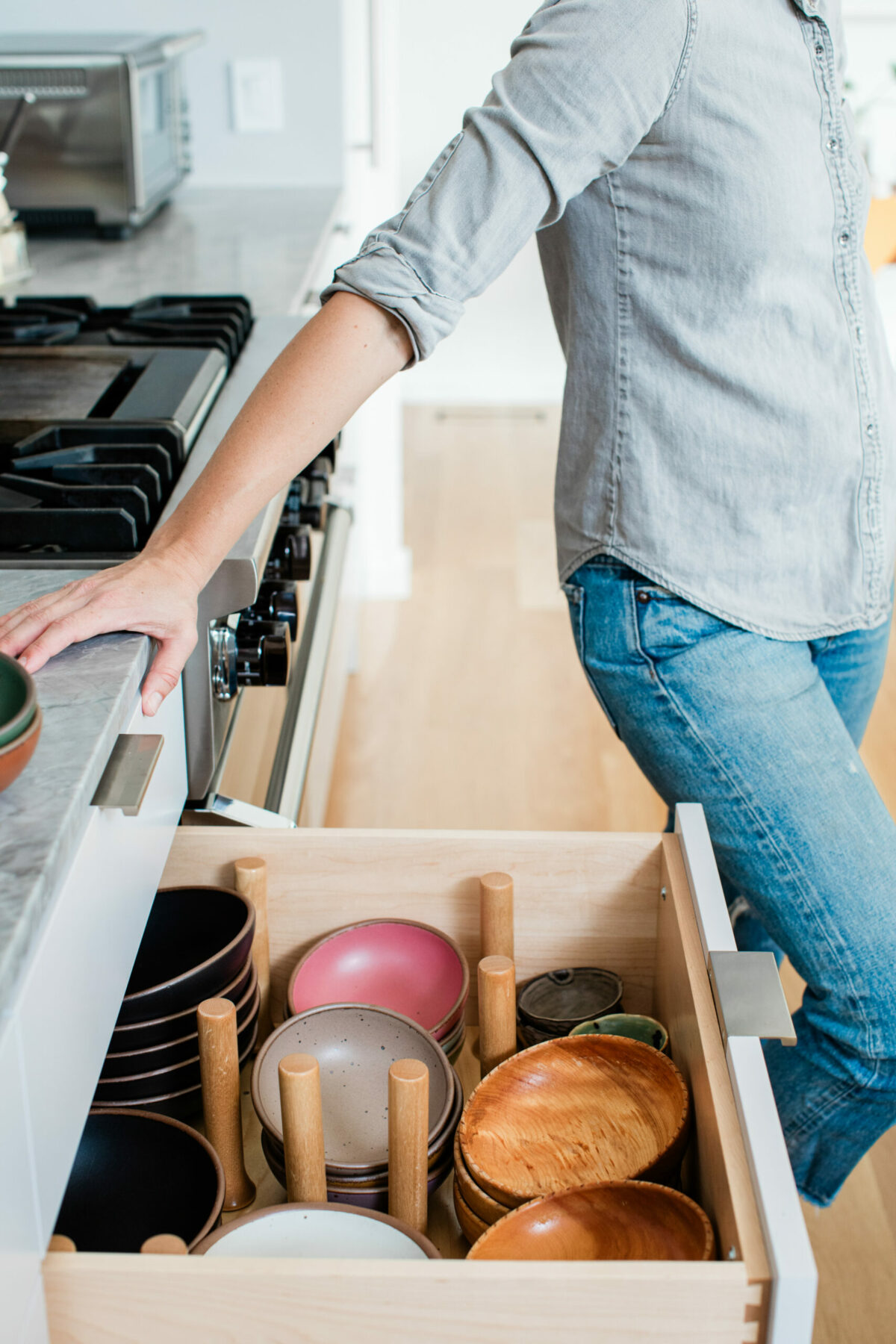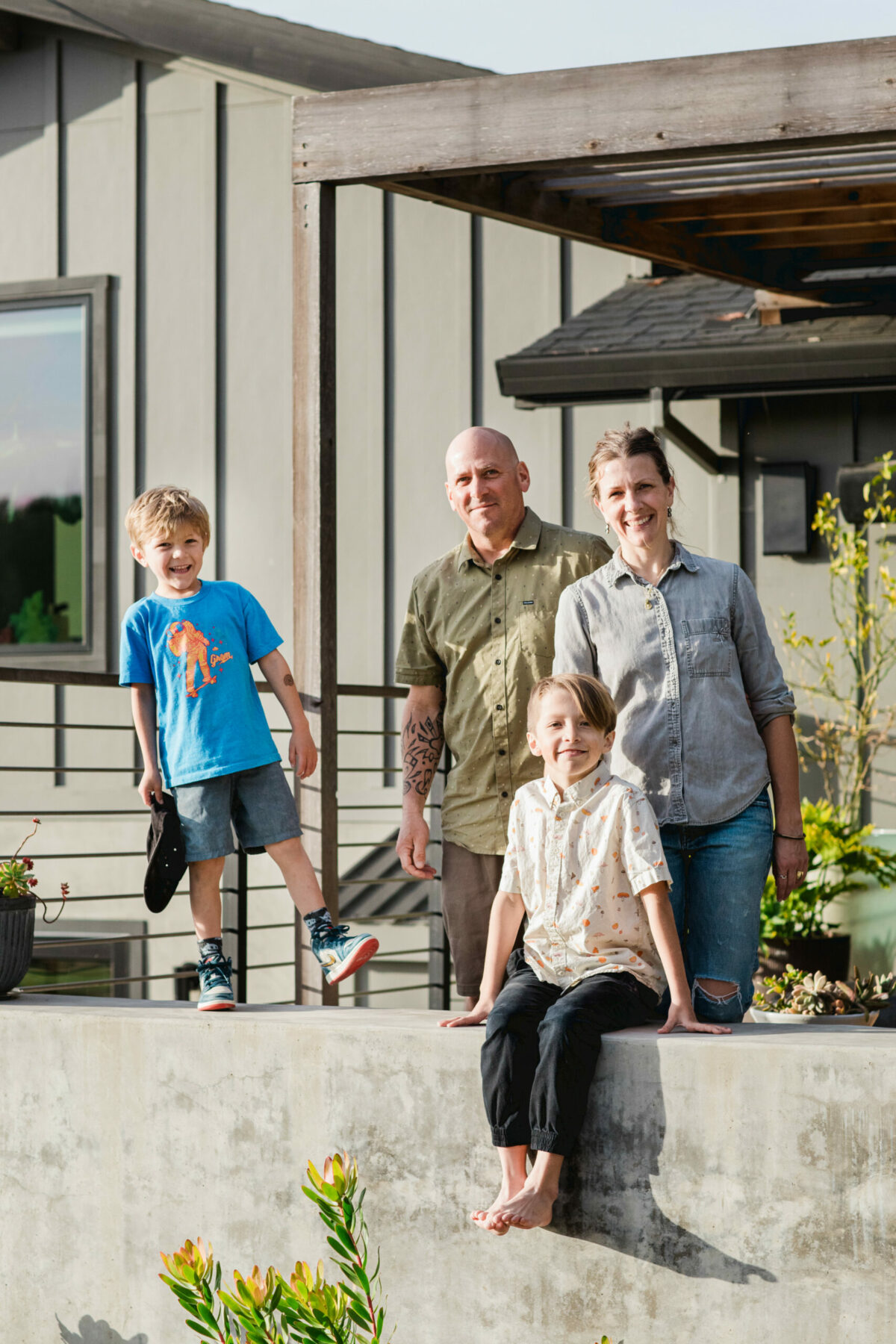To longtime chef and culinary instructor Laci Sandoval, any great kitchen is built around a single overarching principle: Less is more.
It’s a lesson she’s applied to the two kitchens she has designed on her family’s rural Penngrove property. The first is a small demonstration and teaching kitchen located in an accessory dwelling unit Laci and her husband, Travis, built in 2017. The other is the open family kitchen they built three years later, which is suited for both weeknight meals and big holiday celebrations with their two young boys.
While the kitchens have different purposes—family life vs. teaching—they are united in their focus on streamlined, pared-back simplicity, with flexibility and efficiency as key traits. Sandoval, who trained at the Culinary Institute of America in St. Helena and worked for years as a pastry chef in top restaurants like Redd in Yountville and Camino in Oakland, applied lessons from restaurant design to her home and teaching spaces.
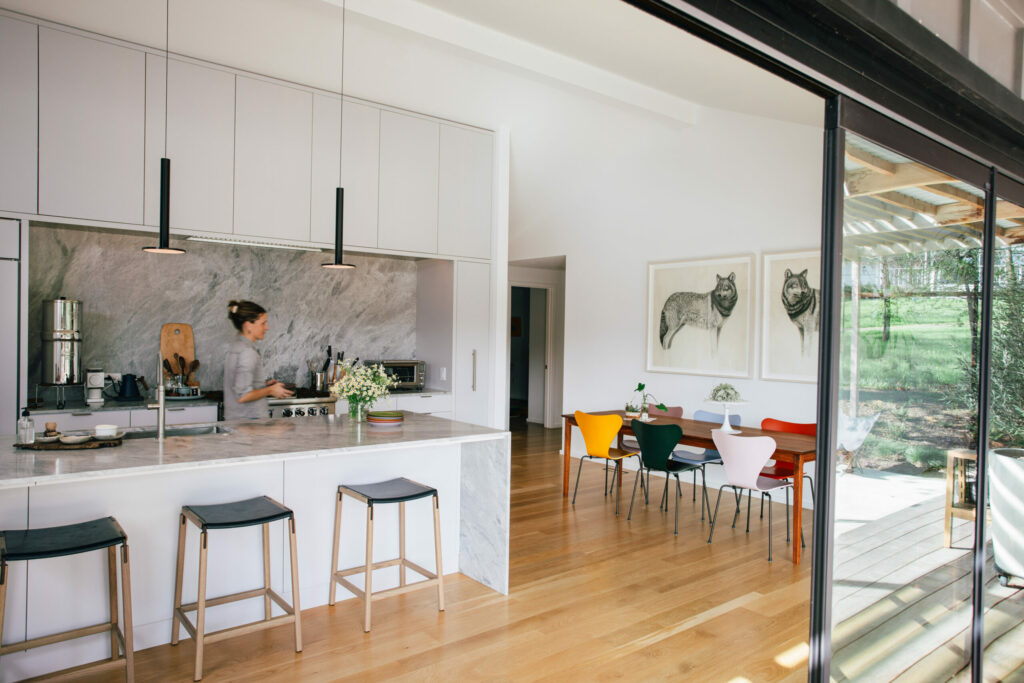
“I worked for so long on a line, where your whole station needs to be pivotable, and we definitely thought of that here,” she explains. “You should be able to stand on one foot and pivot to every single thing you need—find every tool, find every ingredient.”
The Sandoval family home is colorful and modern, decorated with pieces the couple made during their time as working artists. Laci and Travis met at California College of the Arts in the East Bay, where Laci studied metalsmithing and jewelry design and Travis was a glassblower and sculptor. Laci has a love of well-used things and the history those things hold, like the boys’ collection of wooden toys or the family’s everyday plates and bowls in a rainbow of colors, many of which Laci found secondhand.
The family has strong beliefs about the power of food and community—beliefs that are cemented both in the way they prepare meals together and in how they share food with others. For Laci, working with a team of chefs to help feed her community after the 2017 fires was a turning point.
“It was like watching my ethos come to life,” she explains. “No one knows what’s going on, lives are upside down, but we all know we have to eat. So let’s all get together and cook for people, let’s do this thing that feels normal, and hopefully it’ll get us through. The shared moments we have with people, the stories and connections that come about through food, are what this is about.”
Efficient design
“It’s funny, because the trend right now with kitchens is ‘more is more’—two dishwashers and two sinks and all this space. And for us, that wasn’t necessary. I was used to professional kitchens where you’d have just a small, efficient space. I didn’t want any of that extra stuff. Just simple. In a restaurant, pastry chefs in particular are always given the smallest amount of space possible—they’d put you in the coat closet if they could. And you can’t be in anyone’s way. You don’t leave your station during service because that’s wasted time, so everything you need has to fit in a tiny space—there can’t be extra bits and bobs. And that’s how we wanted this space to feel.”
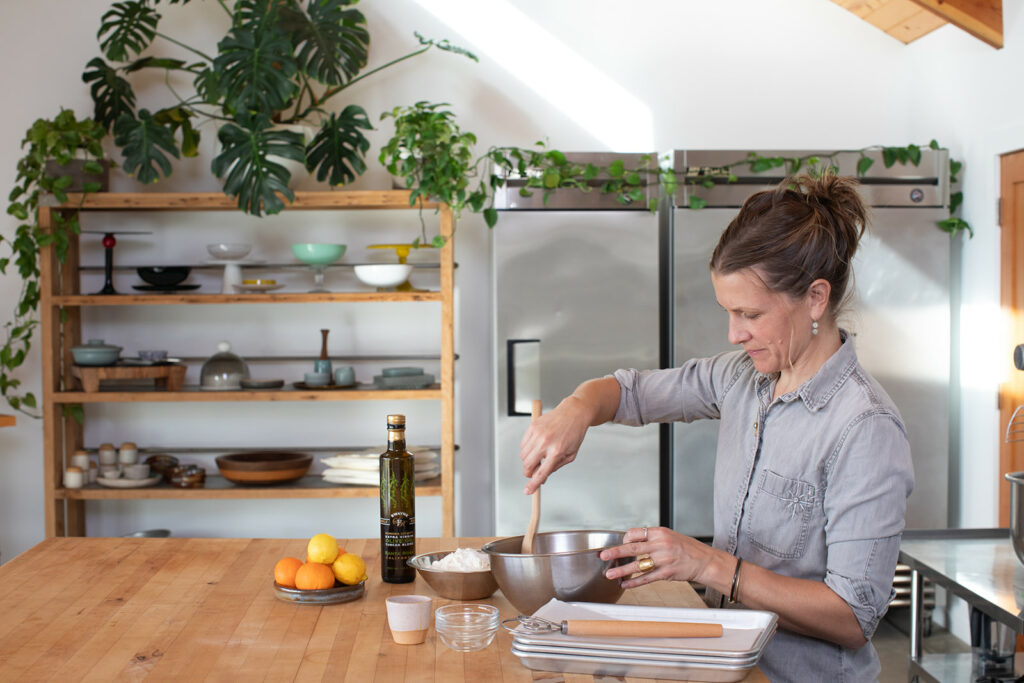
Living for now
“When we were starting to renovate the house, one thing that was interesting to me was that there was always this narrative about, like, ‘Well, that choice isn’t good for resale.’ When people are designing their home, we train them to think about not living there anymore, making choices that are about someone else in the space. And part of that is fine—it’s good to keep in mind living somewhere else at some point. But if you’re designing a home, you should design it for just you, right?
In the kitchen, for example, we were encouraged to think about more cabinetry space because of resale. And we didn’t necessarily want that. We already have a giant pump track for the boys and their bikes in our front yard, so we’ve already narrowed down the customer base, you know? Whoever might want this house someday has got other hurdles to get across before they nitpick about how many cabinets!”
Stocking the kitchen
“There’s a difference between an ingredient home and a snack home. We are an ingredient home. When the boys want a snack, it’s going to be something like salami and cucumbers. Our pantry is just one tall pullout, really simple. I don’t have to go searching for things. And I don’t have a lot of tools. I refuse to own a tool in my kitchen that doesn’t have more than one purpose, you know? Everything has to have multiple uses.”
Artists as chefs
“I feel like artistic people are innate givers. And food is also like that, right? The food world is so ephemeral. It’s like art that’s meant to be consumed immediately. No one cooks to surround themselves with food and eat it all themselves. Many cooks that I know don’t even eat their own food—they’ll prepare a meal for someone, and then have a bowl of cereal. So cooking is like this wonderful ability to bring something out of your soul that’s tangible to other people.”
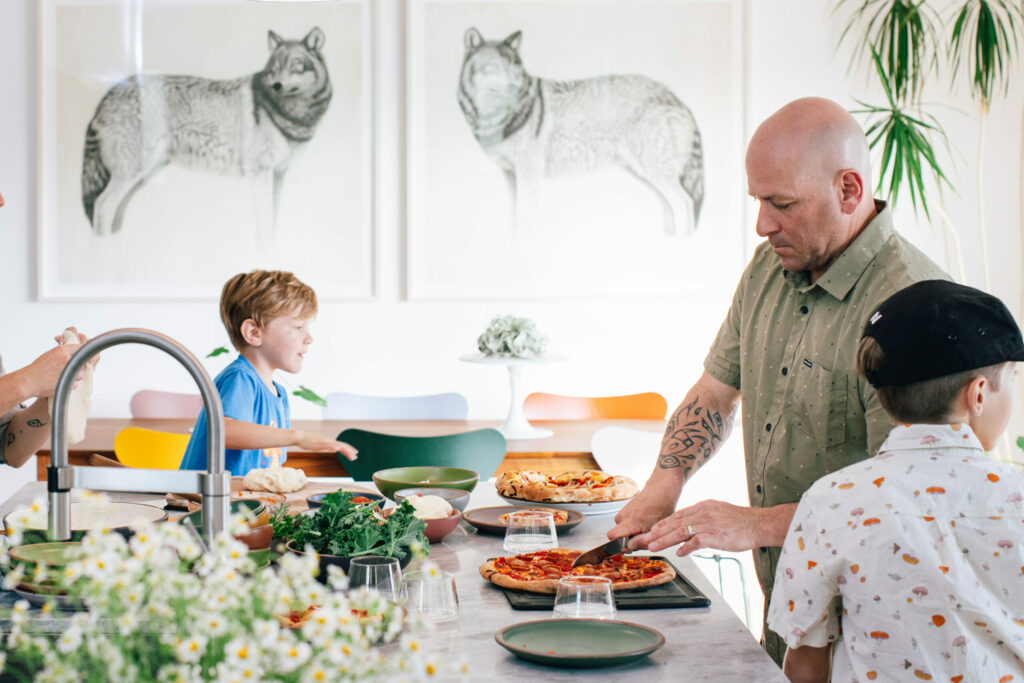
Cooking with kids
“The boys do their homework and projects at the kitchen counter, and everyone’s just hanging out. They always say the kitchen is the heart of the home, and you can really see that. Both of our boys do a lot of activities after school, so dinner is usually pretty fast, and we all eat the same thing, not something separate for the kids. It’s usually a protein—we get a full cow and a half hog every year for the freezer—plus a starch and a veg.
Every once in a while, I do a ‘refrigeration liquidation,’ where I just clean out whatever is in the fridge and put it all in a pot with some pasta, and then top it off with some herbs from the garden. My husband, whose dad was from Mexico, puts hot sauce on basically everything I cook! I try not to take that too personally.”
Summer produce
“I grew up on a farm in South Dakota, and my dad is an incredible gardener. When I was a kid, we would do hundreds of cans of salsa and green beans and pickled carrots, pickled everything. I do less of that now, but I still can our tomatoes. We’ll blanch them to get the skins off, and then I put them in a big, huge pot and I’ll use my hand mixer and chop them up. So they taste really fresh, not that cooked-down taste. And we freeze a lot of stuff. Whatever’s on the fruit trees, especially plums, we just juice and freeze. Everything else out of the garden, we eat right away or put out on the free produce shelf out in front for the neighbors.”
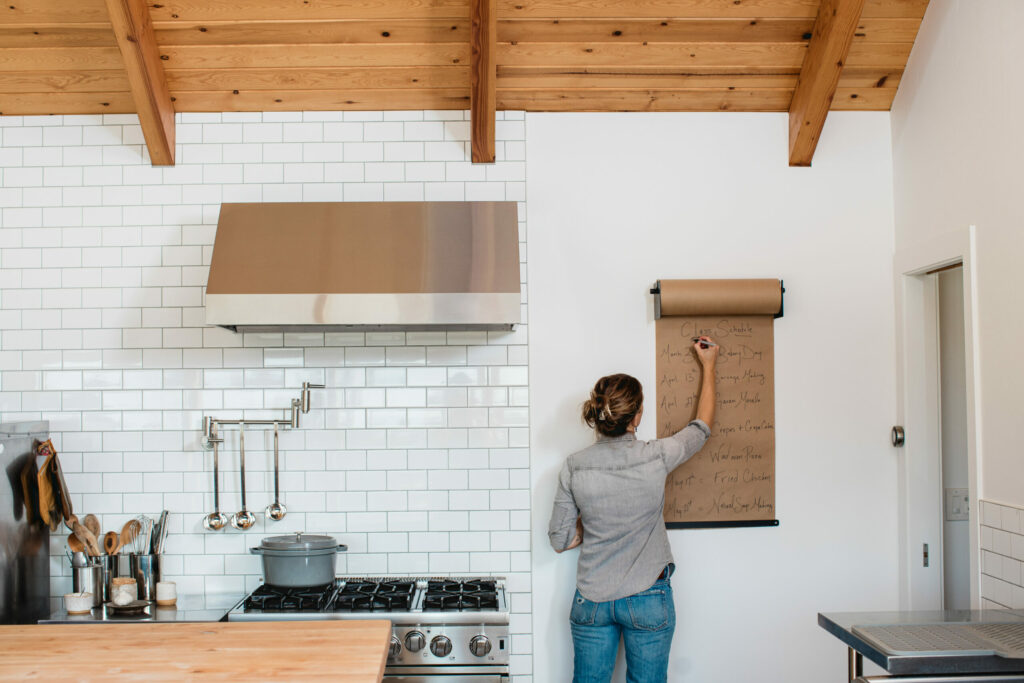
Designed to teach
“When I have a bigger project, like baking bread or a bunch of hamburger buns, that usually happens in the teaching kitchen. Almost everything in the teaching kitchen is flexible—only the sink and the stove are set in place. That’s key. Things are on casters so we can move them around, and the front doors fold into a pocket at the side so the whole front opens up. That gives us the space we need to gather.
Our classes are less about learning techniques, although that’s definitely happening, and more about acknowledging the shared threads in our lives at that moment, and these cool relationships and conversations build off that—this ritual of cooking and eating that feeds so much more than just your stomach.”
Gather together
“There’s this honor in sharing a meal with someone that’s saying, ‘I value you enough to sit at this table with you. I see you as another human being, and in this moment right now, we’re just going to do the thing that we all have in common, which is eat. We all have foods that we love, and traditions we’ve created, and they might not be the same, but I’m going to honor you as a human by sitting across from you.’”


